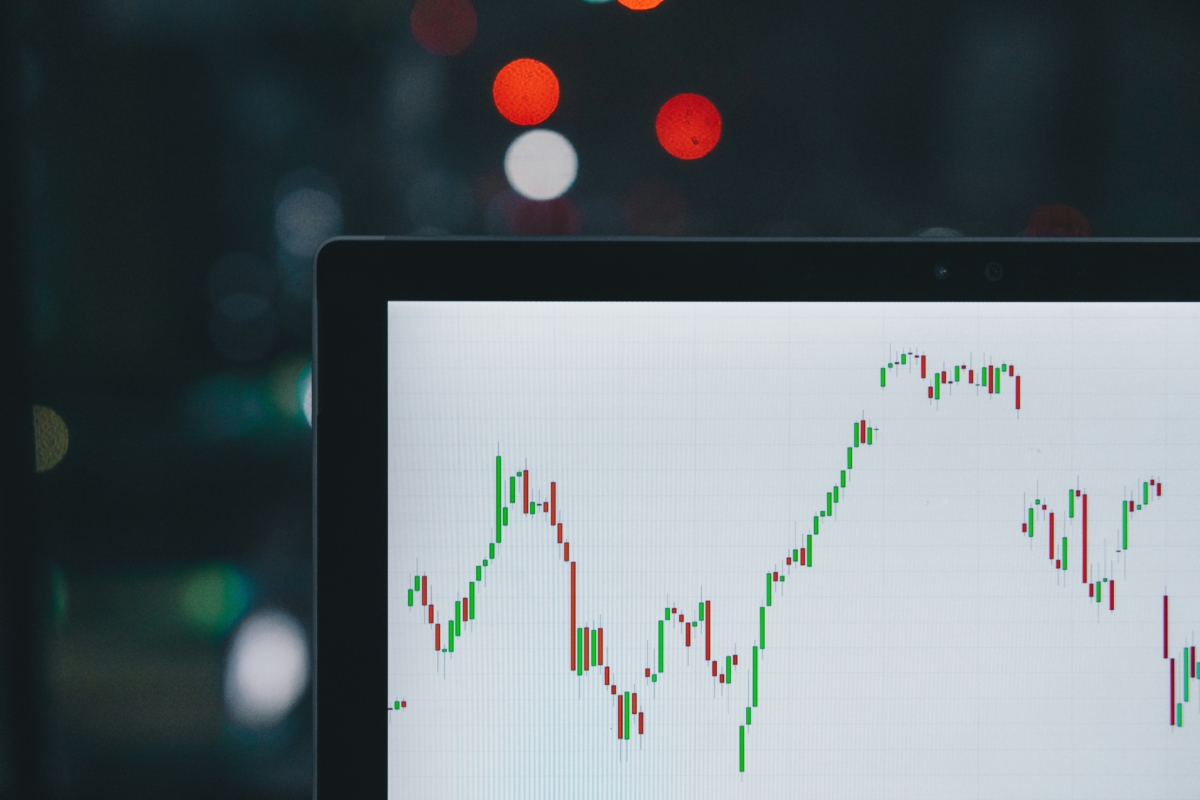
Strong Consumer Demand and Inflationary Pressures Delay Fed Rate Cuts
Weekly Economic Review: January 31, 2025
Resilient Economic Growth Driven by Strong Consumer Spending, and Scant Progress on Reducing Inflation Drives Fed Decision to Maintain Current Interest Rates
The Federal Open Market Committee (FOMC) held its target interest rate between 4.25% and 4.5%, after an aggregate one percentage point cut last year. The Fed signaled its intention to keep interest rates steady for now, while closely monitoring employment and inflation trends. It will also assess the impact of the administration’s fiscal, trade, and immigration policies on inflation, the labor market, and overall economic activity.
The initial estimate of fourth-quarter gross domestic product (GDP) indicated a slowdown in economic growth, coming in lower than expected, although the annual GDP growth of 2.8% was quite resilient by historical standards. The GDP growth was primarily driven by robust consumer spending, fueled by a strong labor market with low unemployment and wages rising faster than inflation. Consumer spending saw its largest growth in nearly two years.
Both the headline and core personal consumption expenditures (PCE) inflation indices for December met expectations but showed no signs of an easing of inflation. Disposable income saw a healthy increase in December. Consumer spending, bolstered by continued growth in disposable income, also met expectations and was higher than the upwardly revised figure for the previous month, driven by increases in both goods and services.
Let’s examine in more detail the FOMC meeting, fourth-quarter GDP, the PCE price index, personal income, and personal spending data announced last week.
FOMC Meeting: The FOMC unanimously voted to maintain the federal funds rate within the current target range of 4.25% to 4.5%. They noted that inflation remains elevated, which would dictate against a rate cut at this time. Moreover, the labor market is solid, the unemployment rate has stabilized at a low level, and the risks to achieving employment and inflation goals are roughly balanced. During the press conference, Federal Reserve Chair Jerome Powell stated that the Fed is not in a hurry to lower interest rates, monetary policy is meaningfully restrictive, and future rate adjustments will depend on incoming data and the economic outlook. Additionally, four new presidents from the 11 regional Fed banks rotated into voting positions at this week’s FOMC meeting, joining the seven Fed governors and New York Fed President John Williams.
Q4 2024 GDP (Initial Release):, According to the initial estimate of the Bureau of Economic Analysis (BEA), the economy grew 2.3% in the fourth quarter, down from 3.1% in the prior quarter and lower than the 2.6% expectation. On an annual basis, the economy grew 2.8% in 2024 after advancing 2.9% and 2.5% in the prior two years, respectively.
The 2.3% fourth-quarter growth was mainly driven by increases in consumer spending (which accounts for more than two-thirds of GDP and grew at its fastest rate since early 2023) and government spending, partially offset by a decrease in investment. For the fourth quarter, consumer spending rose at a 4.2% rate, higher than the 3.7% of the third quarter and the market’s 3.2% expectation. The increase reflected higher outlays for both goods and services, primarily driven by increases in health care, recreational goods and vehicles, and motor vehicles and parts.
Final sales to private domestic purchasers, a key gauge of the pace of economic activity (which excludes inventories, trade, government spending, and other volatile categories), increased by 3.2%, down from 3.4% in the third quarter. This index, measuring private demand in the economy, represents the sum of consumer spending and private investment. For the last two quarters, the 3.2% and 3.4% growth rates have been above the Fed’s 1.8% non-inflationary long-run potential growth rate. On an annual basis, the index grew 3.0% in 2024, up from 2.7% in 2023.
PCE Price Index & Personal Income and Outlays:,The BEA also reported the following PCE price index, personal income and personal spending:
PCE Price Index:The headline PCE price index for December increased 0.3%, which came in as expected and was higher than the 0.1% posted in the prior month. On an annual basis, the headline PCE inflation increased by 2.6% after advancing 2.4% in November. The annual figure came in as expected but represented the largest gain in seven months. The monthly increase primarily resulted from in-creases in both goods (0.2%) and services (0.3%). Food and energy prices rose by 0.2% and 2.7%, respectively, in December.
The Core PCE for December, which excluded food and energy prices and is the Fed’s preferred gauge of inflation, advanced 0.2%, which was higher than 0.1% in December but came in as expected. Year-over-year, the Core PCE rose 2.8% in December, which met expectations, and was unchanged from the prior month.
Personal Income:Personal income rose by 0.4% in December, matching expectations and improving from November’s 0.3% increase. This growth was primarily driven by higher private wages and salaries. Disposable income, a key factor in consumer spending, also increased by 0.4% after a 0.3% rise in November. However, real disposable income saw a modest 0.1% increase in December, consistent with the previous month. Personal savings amounted to $843 billion in December, with the personal saving rate (savings as a percentage of disposable income) dropping to 3.8% from 4.1% in November, the lowest since December 2023.
Personal Spending:Personal spending (or consumer spending) increased by 0.7% in December after advancing 0.6% (revised up from 0.4%) in November. The December figure came in higher than the 0.5% market expectation and was mainly driven by spending increases for both goods (0.3%) and services (0.4%). Within goods, the largest contributors were gasoline and other energy goods as well as food and beverages. Within services, the largest contributors were spending for housing and utilities and transportation services.
On a concluding note,although fourth-quarter GDP growth was lower than expected and below the previous month’s figure, final sales to private domestic purchasers a key indicator of underlying economic growth encompassing consumer spending and business investments—showed a strong 3.2% growth rate in the fourth quarter. Over the past two months, consumer spending has exceeded disposable income, suggesting that some spending was financed from savings. The savings rate fell to 3.8%, a two-year low and significantly below the pre-pandemic 2019 average of 7.31%.
While the New York Fed has not yet released household debt and credit data for the fourth quarter of 2024, the latest third-quarter data shows credit card balances at $1.17 trillion, an increase of $24 billion (2.1%) during the third quarter and $87 billion (8.1%) over the past year. This indicates that consumers continue to rely on credit cards for their spending. The wealth effect from high housing equity and stock market gains is likely to continue supporting consumer spending, particularly among high-income consumers. However, low-to middle-income consumers face constraints from depleted savings and high credit card debt, making continued spending in excess of disposable income unsustainable. Any price hikes resulting from Trump’s tariffs, immigration, and fiscal policies could further dampen consumer spending and economic growth.
The latest economic forecasts from the Fed project a 2.1% growth rate for the economy in 2025, aligning closely with market expectations. Regarding rate cut predictions, the market anticipates a 100% probability of a 0.25% rate cut and an 88% chance of an additional 0.25% rate cut in 2025. No rate cuts are expected until the June or July FOMC meeting. The Treasury yield curve remained virtually unchanged last week.
Mark Yoon, CFA CPA
EVP & CFO of Commercial Bank of California
Thomas McCullough
EVP of Commercial Bank of California
_______________________________________________________________________
All content available on this material is general in nature, not directed or tailored to any particular person, and is for informational purposes only. Any of its content is not offered as investment advice and should not be deemed as investment advice or a recommendation to purchase or sell any specific security. The information contained herein reflects the opinions and projections of Commercial Bank of California (CBC) as of the date hereof, which are subject to change without notice at any time. CBC does not represent that any opinion or projection will be realized. The information contained herein has been obtained from sources considered reliable, but neither CBC nor any of its advisors, officers, directors, or affiliates represents that the information presented on this material is accurate, current, or complete, and such information is subject to change without notice.


